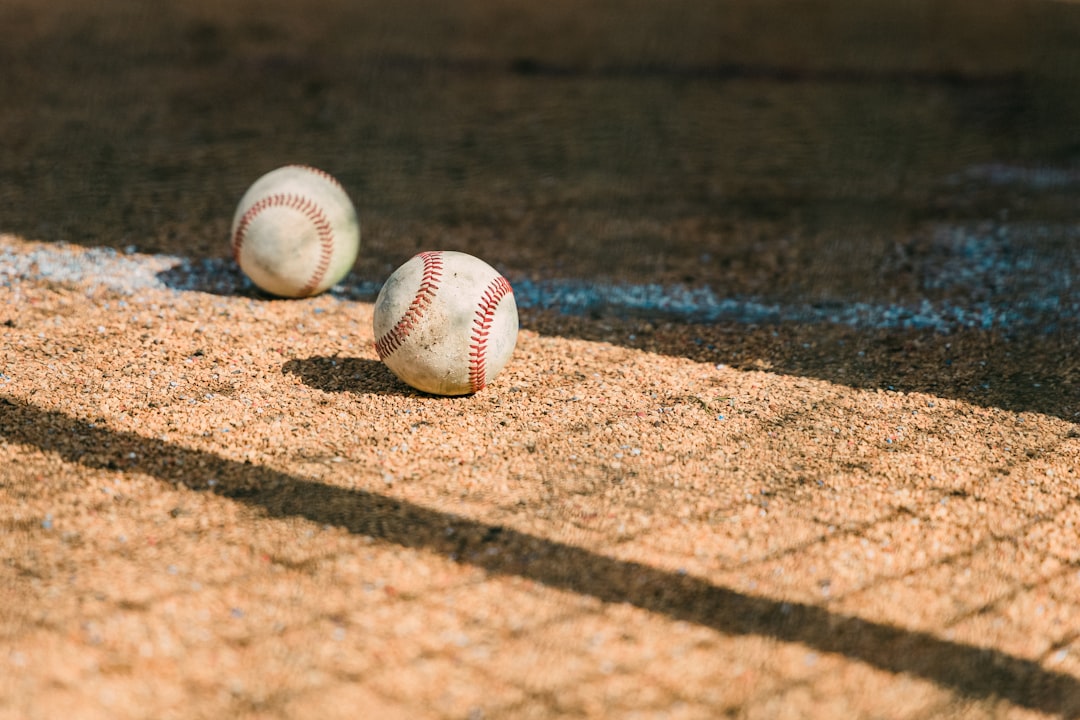
The Role of Minor League Baseball in Player Development
Minor League Baseball (MiLB) plays a crucial role in the development of players aspiring to reach the major leagues.The purpose of the MiLB system is to nurture and cultivate talent, providing players with the necessary resources and opportunities to improve their skills and ultimately succeed at the highest level of the sport. The MiLB system is structured hierarchically, with different levels including Rookie Ball/Short Season, Low/High-A Ball, Double-A, and Triple-A. Each level presents unique challenges and offers specific avenues for player development.
Purpose and Structure of the Minor League Baseball System
The purpose of the Minor League Baseball (MiLB) system is to develop and nurture talent for the major leagues. MiLB consists of a hierarchical structure with different levels, including Rookie Ball/Short Season, Low/High-A Ball, Double-A, and Triple-A. Each level of MiLB offers unique challenges and opportunities for player development.
For example, the Rookie Ball/Short Season level is designed to help newly drafted players acclimate to professional baseball. It provides them with a transition period to adjust to the demands of the game and begin developing their skills. Low/High-A Ball is the first step towards playing a full professional season. It challenges players to compete over an extended period and further refine their abilities. Double-A is considered the beginning of the upper minors, with more talented players and a higher level of competition. Triple-A is the level closest to the majors, featuring rising stars, experienced players, and rehabbing major leaguers.
The structure of the MiLB system allows players to progress through the ranks, gaining experience and developing their skills at each level. The challenges faced at each level prepare players for the next step in their journey towards the major leagues. The purposeful structure of the MiLB system ensures that players receive the necessary development opportunities to reach their full potential.
Contributions of Minor League Baseball to Player Development
MiLB contributes to player development through coaching, instruction, strength and conditioning programs, and player health and nutrition support. The coaching staff plays a crucial role in helping players refine their techniques and enhance their performance on the field. They provide valuable instruction and guidance, helping players develop their skills and improve their overall game.
Strength and conditioning programs are implemented to improve players’ physical fitness and stamina. These programs focus on developing strength, speed, agility, and endurance, allowing players to excel in the demanding professional baseball environment. Additionally, player health and nutrition support are prioritized to ensure that players are in optimal condition to perform at their best.Proper nutrition and conditioning are essential for players to maintain their energy levels and avoid injuries.
Technology and analytics play a significant role in enhancing player development in MiLB. Advanced technologies and data-driven insights have revolutionized the way players develop their skills. Personalized development plans are created for each player, taking into account their unique strengths and weaknesses. Video analysis allows players to review their performances and identify areas for improvement. Furthermore, coaches and players can utilize different learning styles to align their objectives and maximize development.
For example, Brian Graham, the Director of Player Development for the Baltimore Orioles, emphasizes the use of technology and analytics in player development. He acknowledges the value of analytics in confirming what coaches see with their eyes, but emphasizes that coaching expertise remains the most important factor in player development. Graham and his team of coaches and instructors create individual development plans for each player, utilizing video analysis and personalized instruction to help players improve their skills and reach their potential.
Levels of Minor League Baseball
MiLB consists of different levels, each serving its own purpose in the player development process. These levels include Rookie Ball/Short Season, Low/High-A Ball, Double-A, and Triple-A. Each level provides unique challenges and opportunities for players to develop their skills and progress towards the major leagues.
The Rookie Ball/Short Season level is the starting point for newly drafted players. It allows them to acclimate to the professional baseball environment and begin their development journey. This level provides a transition period for players to adjust to the demands of the game and develop their skills under the guidance of experienced coaches and instructors.
Low/High-A Ball serves as the first step towards playing a full professional season. Players at this level face the challenge of competing over an extended period and adjusting to the rigorous schedule of a professional baseball season. The competition becomes more intense, and players are tested both physically and mentally. This level is crucial for players to gain experience and further refine their skills.
Double-A is considered the beginning of the upper minors, where more talented players compete against each other. The level of competition increases, and players face more advanced pitching and hitting. Double-A serves as a stepping stone for players to prove themselves and showcase their skills to major league organizations. It is a critical stage in player development, as success at this level often indicates readiness for a promotion to the next level.
Triple-A is the level closest to the majors, featuring rising stars, experienced players, and rehabbing major leaguers. Players at this level are on the cusp of reaching the major leagues and often face the challenge of balancing the desire for promotion with the need to perform consistently. Triple-A serves as a final proving ground before players make the leap to the highest level of professional baseball.
One example of a player who successfully progressed through the MiLB system is Jim Thome. Thome, who was coached by Brian Graham in the minors, had a successful career in the major leagues. Thome’s journey from the minor leagues to the majors showcases the impact of MiLB on his development and eventual success. The coaching, instruction, and opportunities provided by the MiLB system played a significant role in Thome’s development as a player.
Success Stories of Players Progressing Through the Minor League System
The success stories of players who have progressed through the MiLB system serve as inspiration for aspiring players and demonstrate the effectiveness of the player development process. Many players have successfully made the transition from the minor leagues to the major leagues, realizing their dreams of playing at the highest level of the sport.
One notable success story is Manny Ramirez, who was also coached by Brian Graham in the minors. Ramirez had a remarkable career in the major leagues, known for his exceptional hitting abilities. His journey from the minor leagues to the majors demonstrates the impact of the MiLB system on his development as a player.
Success stories like those of Jim Thome and Manny Ramirez highlight the importance of the MiLB system in nurturing and developing talent. These players’ journeys serve as a testament to the effectiveness of the coaching, instruction, and opportunities provided by the minor league teams and the MiLB system as a whole. Their success in the major leagues is a reflection of the hard work, dedication, and support they received during their time in the minor leagues.
Challenges and Opportunities in Minor League Baseball
While MiLB provides opportunities for player development, players in the minor leagues also face various challenges. The minor leagues can be a demanding environment, both physically and mentally, and players must navigate these challenges to succeed.
One of the primary challenges in the minor leagues is the level of competition. Players compete against talented individuals who are also striving to reach the major leagues. The competition can be fierce, and players must consistently perform at a high level to stand out and earn promotions.
Injuries are another challenge that players may encounter in the minor leagues. The rigorous schedule and demands of professional baseball can put a strain on players’ bodies, increasing the risk of injuries. Dealing with injuries requires resilience and the ability to bounce back and continue developing despite setbacks.
Furthermore, players in the minor leagues often face lifestyle adjustments. They may be away from home for extended periods, living in unfamiliar cities and adjusting to the demands of a professional athlete’s lifestyle. These adjustments can be challenging, but they also provide opportunities for personal growth and maturity.
Despite the challenges, the minor leagues also offer opportunities for growth and advancement. MiLB provides a platform for players to showcase their skills and attract attention from major league teams. Performances in the minor leagues can lead to promotions and opportunities to compete at higher levels. The minor leagues create a pathway for players to pursue their dreams of reaching the major leagues and achieving success in professional baseball.
Role of Minor League Baseball Teams in Player Development
Minor league teams play a crucial role in supporting player development. They provide coaching, instruction, and a supportive team environment. The coaching staff works closely with players to help them improve their skills and reach their full potential. They provide valuable guidance and mentorship throughout the player development process.
Minor league teams offer opportunities for players to gain experience through game time and practice. Players have the chance to compete in real-game situations and apply the skills they have learned in a competitive environment. Additionally, practice sessions allow players to further develop their abilities and work on specific areas of their game.
One example of how minor league teams support player development is through the establishment of a supportive team environment. In this environment, players can learn from each other, share experiences, and push each other to improve. The camaraderie and teamwork fostered within the team contribute to the overall development of the players.
The role of minor league teams in player development extends beyond the on-field aspects. These teams provide resources and support to help players navigate the challenges they may face off the field. This support can include assistance with housing, transportation, and other logistical aspects of a player’s life.
Overall, minor league teams play a critical role in the development of players. They provide the necessary coaching, instruction, and support to help players improve their skills, gain experience, and prepare for the challenges of professional baseball. The collaborative efforts of minor league teams and their coaching staff contribute to the growth and development of players as they progress through the MiLB system.
Use of Technology and Analytics in Player Development
Technology and analytics have revolutionized player development in MiLB. The use of advanced technologies and data-driven insights has provided coaches and players with valuable tools to enhance their performance and improve their skills.
The integration of technology in player development allows for a more detailed analysis of players’ techniques and performance. Video analysis, for example, enables players to review their performances and identify areas for improvement. Coaches can provide specific feedback based on objective data, helping players make adjustments and refine their skills.
Moreover, analytics have become an integral part of player development. The use of data-driven insights helps coaches and players make informed decisions about training, strategy, and player evaluation. Analytics provide valuable information on player performance, strengths, weaknesses, and tendencies, allowing coaches to tailor their instruction to the individual needs of each player.
It is important to note that while analytics are valuable, coaching expertise remains essential in player development. Coaches provide guidance, mentorship, and personalized instruction that cannot be solely replaced by technology and analytics. The combination of coaching expertise and data-driven insights creates a comprehensive approach to player development.
The use of technology and analytics in player development is exemplified by the experiences of Brian Graham, the Director of Player Development for the Baltimore Orioles. Graham embraces the use of technology and analytics to enhance player development. He recognizes the value of analytics in confirming what coaches see with their eyes, but emphasizes that coaching expertise is the most important factor in player development. Graham and his team utilize video analysis and personalized instruction to help players improve their skills and reach their potential.
Coaching and Player Development in Minor League Baseball
Coaching plays a vital role in player development in MiLB. The coaching staff not only teaches players the necessary skills and techniques but also provides guidance and mentorship throughout the development process. Personalized instruction and mentoring contribute to the growth of players, allowing them to understand their strengths and weaknesses and work towards improvement.
Coaches collaborate to create individual development plans for each player. These plans take into account the player’s unique abilities, areas for improvement, and long-term goals. By tailoring the development plan to the specific needs of each player, coaches can maximize the player’s potential and foster their growth.
One important aspect of coaching in MiLB is the building of connections between coaches and players. Coaches understand that building a strong connection with players is crucial for effective development. This connection allows coaches to understand the mindset of players, their motivations, and their individual challenges. By sitting on the bench with players during games, coaches can observe their thought processes, provide real-time guidance, and establish a strong connection.
An example of the importance of building connections and understanding player mindset is demonstrated by Brian Graham, who sits on the bench with players during games. This approach helps him understand the mindset of players and build a connection with them. By understanding the players’ mindset, coaches can effectively guide players and tailor their instruction to meet their individual needs.
Factors in Creating a Specific Development Plan for Each Player
Creating a specific development plan for each player in MiLB involves considering various factors. Coaches and development staff take into account the player’s current skills, strengths, weaknesses, and long-term goals when designing an individualized plan.
One of the primary factors considered in creating a development plan is the player’s current skill set. Coaches assess the player’s abilities in different aspects of the game, such as hitting, fielding, pitching, or base running. By identifying the player’s strengths, coaches can focus on further developing those skills and maximizing their potential.
The player’s position and role within the team are also taken into account when creating a development plan. Different positions require specific skills and areas of focus. For example, a pitcher’s development plan may prioritize improving pitch velocity, control, and secondary pitches, while a hitter’s plan may focus on refining swing mechanics and plate discipline.
Furthermore, coaches consider the player’s long-term goals when designing a development plan. Each player has unique aspirations and objectives, whether it’s reaching the major leagues, becoming an impact player, or improving specific skills. By aligning the development plan with the player’s goals, coaches can provide the necessary guidance and instruction to help the player achieve their desired outcomes.
It is important to note that development plans are not static and can evolve over time. As players progress through the MiLB system and face new challenges, their development plan may be adjusted to address their changing needs. The flexibility of development plans allows coaches and players to adapt and make necessary modifications to maximize development.
Winning Impact on Player Development in the Minor Leagues
The impact of winning in the minor leagues on player development is a topic of discussion among baseball professionals. While winning is important, it is not the primary focus of player development in professional baseball.
The majority opinion in professional baseball is that wins and losses in the minor leagues are important but not the sole indicator of player development. The primary objective of the minor leagues is to develop players and prepare them for the major leagues. This focus on player development means that individual player progress and improvement are prioritized over team success.
Nonetheless, winning in the minor leagues is seen as an intrinsic skill and can contribute to a positive team culture and work ethic. It provides players with a taste of success and can help create a winning mentality. Winning can also attract attention from major league teams and showcase a player’s ability to perform under pressure.
It is crucial to note that even non-prospect players in professional baseball can have a significant impact and development potential. The development process is not exclusively reserved for top prospects but extends to all players in the minor leagues. Every player has the opportunity to improve their skills and potentially reach the major leagues with their dedication and hard work.
In conclusion, Minor League Baseball plays a pivotal role in the development of professional baseball players. Through its purposeful structure, coaching, and opportunities, MiLB nurtures talent and prepares players for the major leagues. The different levels of MiLB, including Rookie Ball/Short Season, Low/High-A Ball, Double-A, and Triple-A, provide unique challenges and opportunities for player development. Coaching, instruction, strength and conditioning programs, and player health and nutrition support contribute to the improvement of players’ skills and overall performance. The use of technology and analytics enhances player development by providing valuable insights and personalized instruction. Success stories of players progressing through the minor league system demonstrate the effectiveness of MiLB in nurturing and developing talent. Despite the challenges faced in the minor leagues, opportunities for growth and advancement exist, allowing players to showcase their skills and pursue their dreams. Minor league teams play a crucial role in supporting player development by providing coaching, instruction, and a supportive team environment. The use of technology and analytics in player development has revolutionized the way players improve their skills. Coaching is an essential aspect of player development, providing personalized instruction and guidance. Factors such as the player’s current skills, position, and long-term goals are considered when creating a specific development plan. While winning is important in the minor leagues, player development remains the primary focus. The development of players in the minor leagues is not limited to top prospects but extends to all players who are dedicated and determined to improve. Minor League Baseball serves as a vital stepping stone for players on their journey to the major leagues.


